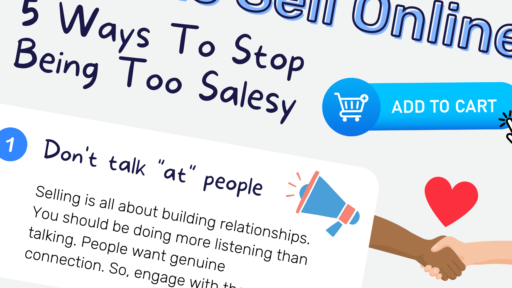Content marketing is one of the best digital marketing techniques. Businesses use it to build brand awareness, customer relationships, and loyalty.
The technique is so popular that virtually every modern business uses it. It’s hard to find an industry where content marketing isn’t used. But therein lies the problem. How do you create content that stands out from the crowd?
Some consumers have almost grown immune to most forms. So, you need that next level. Creative content that grabs attention. You need interactive content.
We’ll take you through 6 interactive content ideas that go beyond the typical types. This quality content will help you drive more customer engagement. And (hopefully) earn you more sales:
1. Interactive video content rules
In 2018, consumers watched an average of 10.5 hours of video content per week. But this number has increased over the years. Almost doubled. Today, people watch an average of 19 hours of online video content weekly.

Source: Wyzowl
But it gets better. People are 2x more likely to share video content than any other type of content. And roughly 54% of consumers say they want more video content from brands.

Source: HubSpot
We don’t even have to mention the insane growth of TikTok to drive the point home.
The modern consumer is desperate for video content. That’s why so many brands are creating it. But here’s the twist. Instead of making generic video content, why don’t you use interactive videos?
Interactive videos are like regular ones. Except they allow viewers to play with the clip. The viewer can scroll through, drag, and click on various interactive elements within.
IKEA loves to create interactive content pieces. They’ve made a load of different types over the years. Like the example below.
It allowed users to click on items shown in the video. This led viewers to product pages where they could see pricing and buy the items.
Applications of interactive video content
It’s not all about clicking, though. You could try interactive content ideas like a 360˚ video.
This has so many use cases for visual content. Especially in eCommerce. For example, a furniture store could let users scroll around a piece of furniture within the video. This helps interested consumers see the item from all angles.
Interactive videos can also let viewers input data. You could ask a question and let people enter their answers. The viewer could then see a specific type of video based on their entered data.
These videos are a great way to engage prospects. Because they introduce a gamification element. This makes them fun and more appealing.
Interactive videos also boast a high click-through rate. 10x higher than a passive video. These metrics are miles ahead of YouTube Annotation, Google Display, and banner ads.

Source: Interactive4video
Take a look at your current video content and overall content marketing strategy. How could you improve it with interactive videos?
You could:
- Let viewers chart their own path
- Give 360-views to show off your products
- Add clickable CTAs (calls to action) to send viewers to your landing pages
Interactive video format is an untapped area. It has so much potential. But very few brands use it. So, come up with a few ideas and start testing your own. Tools like Wyzowl and Wideo can help you with that.
2. Let your users do the talking (user-generated content)
Did you know 49% of users trust reviews? Just as much as recommendations from family and friends. And around 89% of consumers read reviews before buying a product.
So, you’re selling yourself short if your content marketing campaign doesn’t include user-generated content (UGC). This is content created by customers. Not brands. And it’s one of the most tried-and-tested interactive content ideas.
One great place to use UGC is on your landing pages. Reviews, testimonials, and other types will give your product or service social proof. This will then help you drive more engagement and raise your conversion rate.
Shopify does this so well. Also, notice how the CTA is right next to the testimonial.

Source: Shopify
You can also incorporate UGC into your social media marketing strategy. Apple and GoPro are kings in that department.
They encourage customers to share their moments using the products. Then they repost these on their official accounts. Exposing the creators to millions of followers.
Your brand needs a similar content strategy. Try creating a brand hashtag and encourage your customers to use it. Apple uses #ShotoniPhone.

Source: Apple Instagram
Then consider using influencer marketing to boost the popularity of your brand hashtag. Make sure to track the hashtag to see people using it. Then compile the best posts and use them in your campaigns.
You can also use social listening tools to see what customers say about you. Reach out to the people mentioning your brand or products and ask if you can use their posts.
They should be talking about your brand in a positive way, of course. If it’s negative, find a way to resolve those issues before they go viral.
A quick look at reviews and testimonials can show you the kind of keywords you need to target. Even product reviews mentioning rich keywords can improve your SEO. That’s why it’s so beneficial for SEO for SaaS and other industries.
How to encourage user-generated content
Another easy way to scale your UGC campaigns is by encouraging users to leave a review of your product. Here’s how to do that:
- Ask your customers for reviews directly
- Make it easy to rate your product
- Automate the ask
- Briefly point out why reviews are important
- Respond to all reviews
- Set up a profile on 3rd-party review platforms like G2 and Yelp
- Consider rewards or giveaways for taking part
User-generated content can also give you brilliant blog post ideas.
See what issues customers talk about in your reviews, comments section, and social media. Then, curate engaging content providing a solution. It could be blog posts, whitepapers, infographics, or podcasts. You can then promote the post with a content platform like Quuu Promote.
It’s a great way to solve your customer’s problems. And build your profile as a thought leader as a bonus.
3. Polls and surveys record reactions
Another easy way to engage your target audience is through polls and surveys. Besides boosting user engagement, polls can help you learn more about your customers.
They come highly recommended when you want quick and easy answers. For example, you can ask users for feedback on an article they’re reading. Then, you can use the feedback to create a style guide. This will help you maintain content consistency and quality.
You can also ask a prospect why they didn’t purchase an item. Deploy these interactive content ideas as exit-intent popups. For example, the poll below shows up when you’re about to leave the VideoForm website.

Source: VideoForm
You can use similar exit-intent polls to discover why users abandon their carts.
Social media platforms also support interactive posts like polls. Whether on Instagram stories, Facebook, or Twitter. Create a simple poll to engage your audience.
Social media polls don’t have to be serious either. It’s okay to poll your audience on random fun stuff.

Source: Hootsuite
Surveys come in handy when you want to collect more data from your audience. You can distribute them on your website or through email. Then, use social media to inform your audience about it.
Try Hotjar, QuestionPro, or Lucky Orange to create website polls and surveys. For social media, use the inbuilt tools.
4. Create calculators that solve problems
Interactive eBooks can answer a lot of questions. But not everyone has time to go through one. So, what’s the solution?
Another really valuable interactive content idea that’s much faster. A calculator. And there are so many different options based on your niche.
Let’s take Healthline and Mayo Clinic as examples. Both brands are in the health and wellness niche. One of the most sensible choices for that niche is a calorie calculator. And both have one on their site.
The calculator requires users to input data like:
- Age
- Gender
- Weight
- Height
It then calculates the number of daily calories to achieve certain weight goals.

Source: Mayo Clinic
Various B2B brands also use calculators. Look at HubSpot, for example. The SaaS giant has several that help marketers with different queries. The ROI calculator shows content marketers the return they might see after running ads.
 Source: HubSpot
Source: HubSpot
They can help show the value of your product or service. While also generating leads for your business. You can provide the option to download a full report in exchange for an email address. Users will then be put through an email marketing sequence as soon as they do.
Calculators can affect SEO
Another unexpected benefit of creating a calculator? It can boost your SEO result. It’s a free interactive tool that smart brands use to build backlinks. Like Ahrefs. They have a backlink and website authority checker.
If you create an accurate and valuable calculator, you can bet other businesses will link to it. These free backlinks then raise your ranking on SERPs (search engine results pages).
The Mayo Clinic calculator currently has 10,459 backlinks. 58% of which are dofollow.

Source: Ahrefs
Interactive calculators engage users because they pique their interest. They also provide valuable data that can help potential customers solve a problem.
Engage your developers and marketing team and create a valuable calculator for your audience. Online builders like Calconic and Ucalc can help. Let’s see what you come up with.
5. Build a quiz to get to know your audience
Interactive infographics get across information in a fun way. But what if you want information from your customers?
Assessments are interactive content ideas that entertain people. But they also give you a chance to learn more about your audience. Depending on how they’re created, they can also help customers learn something about themselves.
Teachers and trainers use them to make lessons interactive. Quizzes that aren’t graded have also been proven to “boost memory retention, drive engagement, and make learning fun”.
Besides engaging users, interactive quizzes support personalization. They’re also (you guessed it) great for lead generation. You get to learn about people. Then recommend relevant products to them.
That’s what Sephora does with its Skincare Finder. After asking a series of questions, the tool will recommend products that match customers’ needs.

Source: Sephora
B2B brands are also big on quizzes. Rock Content uses one to engage marketers about their sales strategy.

Source: Rock Content
Buzzfeed is another brand that has skyrocketed engagement through interactive quizzes. They now have an entire page dedicated to them.

Source: Buzzfeed
So, how can you create your own? Well, start with picking a topic relevant to your brand. Then start with popular formats like “Which (Blank) Are You?” or “What Type of (Blank) are You?” Or be creative and do whatever the heck you want.
You can use Typeform, Survey Anyplace, and Survey Monkey to help. There are tons of templates to make it simple. For even better results, make sure the quizzes are shareable.
Top tip: remember to A/B test to find the best-performing option that generates the most engagement.
6. Clever chatbots take over customer support
Chatbots may not seem like regular interactive content ideas. But they stimulate engagement by simulating human conversations.
The chatbot market is expected to reach $1.25 billion by 2027. That’s an astronomical growth. Considering it was only valued at $190 million in 2016.

Source: Statista
The rise in popularity comes from various factors. But as artificial intelligence and machine learning technology improve, chatbots become more clever. Which makes them way more appealing.
How to use chatbots on your site and social media
There are lots of ways to use them on your website. Take inspiration from Drift. They use chatbots to help site visitors with general FAQs.

Source: Drift
You could also use chatbots to provide 24/7 customer support. This is a great way to ensure your prospects are always taken care of. It’s especially useful if you have an international customer base. You’ll also save more cash (up to 30%) using them to supplement people.
Some other potential use cases of chatbots include:
- Getting quick answers
- Finding a human customer service representative
- Resolving a complaint
- Making reservations
- Getting ideas for a purchase
In addition to website chatbots, you can launch AI versions on social media. This is a technique used by many B2C and B2B brands. It works on Facebook Messenger, Twitter, WhatsApp, and other platforms.
Polysleep is a Canadian company with a Facebook Messenger “catbot” called “Snooz.” Snooz guides prospects to find the items they want.

Source: Polysleep Facebook
Chatfuel, Tidio, and even HubSpot are some tools that can help you build your own. But keep in mind that chatbots should never replace the human experience.
You still need real people for customer support. Users should be able to exit the conversation and speak to a person. Great chatbot marketing creates a seamless integration. Between the AI, your customer support, and sales & marketing.
Conclusion
You don’t have to reinvent the wheel to make your piece of content stand out and be more engaging. Sometimes the solution is as simple as taking what already works and putting the user at the center.
In other words, you need to take static content and make it interactive for an immersive experience. The 6 interactive content ideas we discussed can help you achieve that:
- Interactive videos
- User-generated content
- Polls and surveys
- Calculators
- Quizzes
- Chatbots
You may want to experiment with other types too. Like an interactive map, infographics, eBooks, or social posts. Basically, try any kind of content format that delivers interactive experiences.
These are all relatively easy-to-implement types of interactive content. But done right, they can all improve user experience and boost engagement. Give it a shot!
Have you used any interactive content lately that you loved? Which brands are nailing it? Let us know in the comments below!





